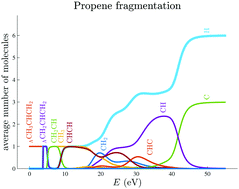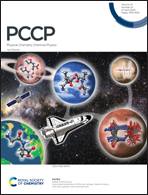The statistical molecular fragmentation model compared to experimental plasma induced hydrocarbon decays
Abstract
We compare the predictions of our recently developed statistical molecular fragmentation (SMF) model with experimental results from plasma induced hydrocarbon decay. The SMF model is an exactly solvable statistical model, able to calculate the probabilities for all possible fragmentation channels as a function of the deposited excitation energy. The weights of the channels are calculated from the corresponding volume of the accessible phase space of the system, taking into account all relevant degeneracies, symmetries and density functions. An experiment designed to study the abatement of propene in N2 using a photo-triggered discharge producing a homogeneous plasma at sub-atmospheric pressure was also performed. Using a 0D model that simulates the complex chemical kinetics in the plasma, it was possible to assess the percentages of the original parent hydrocarbon's fragmentation channels based on the detected species. These results were compared to those obtained from the SMF model. Previous plasma induced hydrocarbon fragmentation experiments for ethene, ethane and propane, were also compared to the predictions of the SMF model. For energies below that of metastable dinitrogen (i.e. below 6.17 eV and 8.4 eV), the SMF model and the experimental fragmentation channels coincide. This study allows one to draw conclusions both on the range of excitation energies transferred to the parent hydrocarbon molecules during plasma discharge and on the probability of the dynamical coupling of two H atoms from neighbouring carbon atoms to form H2 molecules.



 Please wait while we load your content...
Please wait while we load your content...